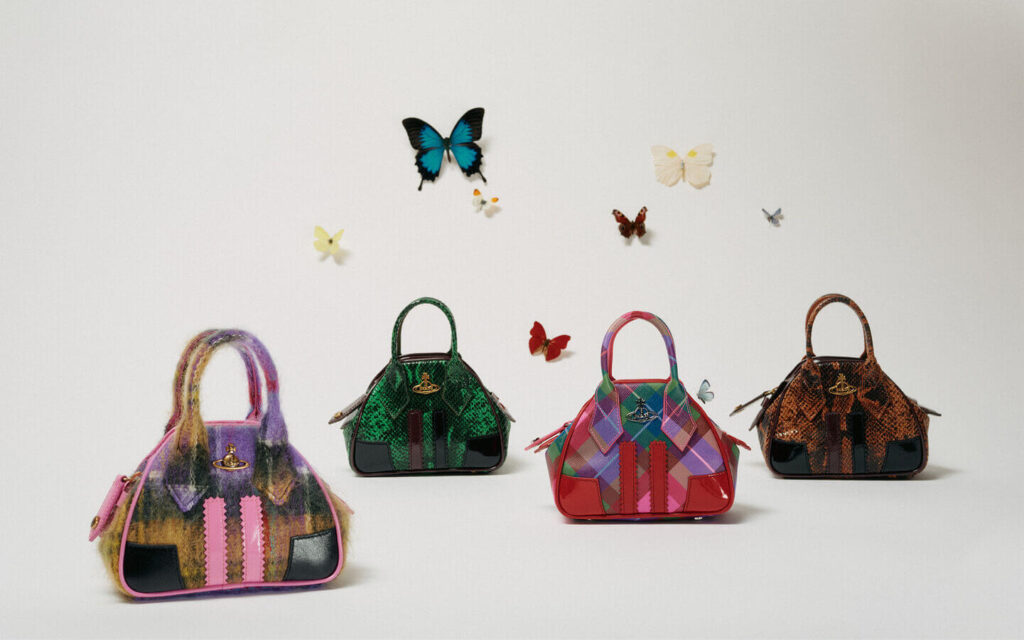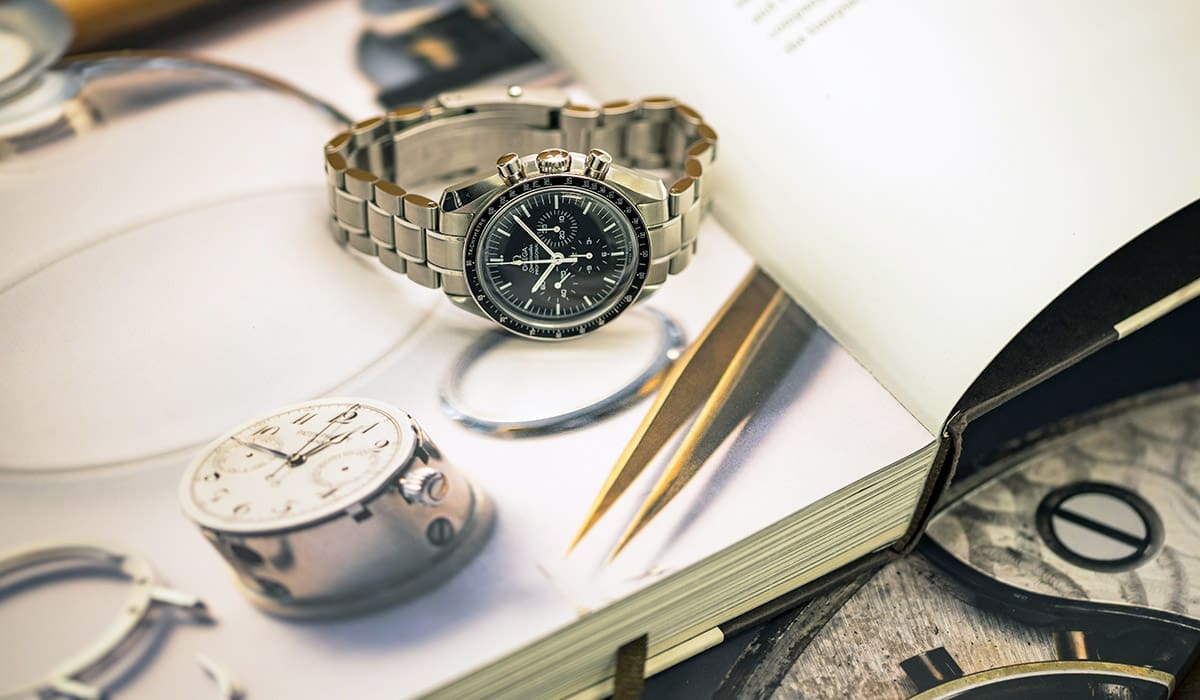
“Hearst Magazines and Yahoo may earn commission or revenue on some items through the links below.”
Way back in 1994, beauty goliath MAC Cosmetics had an idea to team up with breakout names to release a yearly capsule collection of lipsticks and glosses. The campaign, called Viva Glam, would fund and raise awareness for HIV/AIDS programs. Twenty-seven years later, the Viva Glam campaign is still one of the most profound social campaigns in beauty, with this year’s collection being a tribute to the talented artist Keith Haring.
“Rather than feature somebody that’s rising, we wanted to honor someone famous who died during the pandemic of the diseases we’ve worked towards fighting,” John Demsey, executive group president of Estée Lauder Companies, says. The brand has donated every cent of the Viva Glam proceeds to HIV/AIDS organizations through the MAC AIDS Fund.
“When the brand became successful in the ’90s, the founders, Frank Angelo, who was a hairdresser, and Frank Toskan, a makeup artist who was his partner in business and in life, wanted to give back to the world who had given the brand so much,” Demsey explains.
Through the years, MAC has collaborated with iconic faces like Lady Gaga, Mary J. Blige, and most recently Rosalía. The brand prides itself on tapping these talents before they reach full-blown fame.
“Even though our faces haven’t hit peak fame yet, almost all of them grew up using MAC,” Demsey says. “MAC was brand born out of pop culture, so we pluck rising stars who also use makeup as a way to express themselves and their iconic voices.” Some have gone on to have their own cosmetics and beauty lines, he adds (take Rihanna, Lady Gaga, and Taraji P. Henson, for example).
Though each Viva Glam lipstick is more gorgeous than the next, the charitable mission is arguably the best aspect of the campaign. “The little lipstick that could from the very beginning has raised over half a billion dollars since its inception 27 years ago,” he says.
Ahead, we talk more with Demsey about the history of Viva Glam, how the iconic campaign has changed (thanks to technologies like TikTok), and why the Keith Haring collection is the exact antidote you need for this year’s holiday season.
How did the Viva Glam campaign begin?
Frank and Frank created the brand because they saw a need to create something that brought the art of self-expression, creativity, and artistry to the world through inclusivity. Until that point, there was no global beauty brand that truly embraced the idea of beauty for every gender, every size, every shape, and every color. So from the beginning, the brand had a unique point of view.
The original campaign was done by Donald Robertson, who’s a good friend of Frank and Frank. Together, they discovered RuPaul at Woodstock in New York. That’s how the first Viva Glam campaign came to be starring RuPaul. It was the first time ever that a global beauty brand took a persona or characteristic of a man as a woman to represent a company, and thus began the Viva Glam journey.
I joined in on it in 1998, four years after the inception of the fund. Over the course of the years, we have had 50 celebrities associated with the Viva Glam campaign. It’s funny when we do award show red carpets, because about 75 percent of the celebrities have been associated with MAC at some point in their career. We’ve had amazing spokespeople like Rihanna, Lady Gaga, Elton John, and Lil’ Kim, all who aren’t afraid to speak out just like us.

What inspired this year’s campaign honoring Keith Haring?
Here we were: The 27th Viva Glam campaign. We chose Keith Haring not just because he was an iconic artist, but he is the epitome of what we are fighting for. That late-’80s, early-’90s era defined the art scene and the idea of the streets rising up as a part of a community. We’re having a very late-’80s, early-’90s moment in culture, from music to fashion and design. Keith Haring died of AIDS, and he spoke very openly and transparently about the disease and the stigma that was associated with it.
So here we are, hoping to be at the tail end of another global pandemic. Today, there is a similar stigma around COVID. We wanted to use the notion of community and helping populations that are at harm or risk as the framework. We went back to the original idea of what community represented and somebody who authentically spoke or represented that community, and that was Keith Haring.
How did you land on the three lipsticks in this collection?
We thought it would be a beautiful thing to take Keith’s designs and work with his estate to create a range of three lipsticks inspired by them. The collection is all primary colors: red, yellow, and blue, which all come from Keith’s paintings. And interestingly enough, when you go back to the original 12 lipsticks that MAC started its business with, it had a yellow and a blue lipstick. There are a lot of historical references in this lineup, from the packaging on the bullets, which feature Keith Haring designs, to
the charity, which authentically supports organizations working towards gender equality to help people who are at risk or harm from infectious diseases.
Considering the pandemic, how does this year’s campaign feel different?
We’ve never launched a Viva Glam collection around this time of the year. No one thought that we would have worn masks for 18 months. As the world starts to return and the masks come off, people are wearing lipstick again—there’s a feeling of liberation. The holiday season this year feels very different than it did last year. There’s an aura of optimism that there will be a tomorrow. Viva Glam has always been a proactive, positive, life-affirming campaign. The name itself, viva means “to live life,” and glam to be glamorous. This is our reentry into the world, and we’re super proud of it. The art direction of it looks amazing; the makeup, the casting, the hairstyles all feel very new and fresh again, and for half the world it is. It’s our authentic truth.
How has Viva Glam evolved over the years?
When we started, we were sold in three countries. Now we’re in over 120 countries around the world. We have a huge community. This is a brand that always thought big and thought global, but has acted incredibly local in terms of the way that we work to build community. We will continue to advocate for gender equality, LBGTQ rights, and to be a first responder to people affected by tragedy or infectious diseases. MAC will always use its stature to talk about issues that may be uncomfortable for other people. While it’s not always easy being that brand, we are a company of radical inclusion and define ourselves in that way. It’s very important to us, and these values are important to the newer generations too.
Is MAC taking new platforms and technologies into consideration when it comes to the ever-changing model of collaborations, especially when catering to those younger generations?
Viva Glam was created before there was any Internet. There was no social media. MAC was created during the time of MTV. What does this mean in the world of TikTok, or Twitch, or Flip, or all of these other new technologies? It means the creator is everywhere, and the creator is everyone. Everybody has the chance, whether you like it or not, to say what they want to say. We want to shape those conversations to be positive.
I have a 13-year-old daughter, so my insurance policy is watching her and her TikTok rabbit hole. I see how quickly she adapts to beauty and fashion trends, and, for someone who is afraid of a firefly, fell in love with watching horror flicks. All the things she’s interested in, from what music she likes to who she thinks is cool (and isn’t cool) is super interesting to me. I always say that your ultimate insurance policy is to surround yourself by people who are living the life now. I’m confident that as long as we continue to use that as our North Star, we will persevere.
You talk about now pulling inspiration from your daughter, but back at the start of Viva Glam, what did you take into consideration when finding a face for these campaigns?
First and foremost, they had to believe in what it is that we were doing. If it was just a front or an endorsement deal, we weren’t interested. So we actually developed a personal rapport with every single spokesperson we’ve ever had. They helped curate the list of the charitable organizations that got grants. They put effort into speaking up about things like safe sex, intravenous drug use, and things that most people don’t feel comfortable talking about. That was always important.
We’ve had a lot of colorful, loud, outrageous, glamorous, straight-talking personas, who have been unafraid to say what’s on their mind. That renegade spirit, generosity, and fearlessness applies to every single face of Viva Glam. I don’t think there’s ever been a spokesperson that there hasn’t been a degree of controversy with, because of the fact that each and every one was uniquely and proudly a voice that was individual. There are more pop stars and music stars compared to actors and actresses, because singers are themselves when performing. They’re not playing a part—they are the part. I love Hollywood stars, but for this particular campaign, what you’re about or what you have to say matters.
With each spokesperson being so outspoken, does that mean every face has a bit of creative control when it comes to their campaign?
We have to let go. Each and every spokesperson has their own point of view. They get to be a creative director in some way (even though we have strong creative directors at MAC). They decide what they’re going to wear, who is going to shoot them, what their makeup is going to look like, what the shade of the lipstick is going to be, and what they want to talk about.
When did you first realize the power of MAC campaigns and Viva Glam?
One of my favorite moments—and this really hit me—10 years ago, when we first met Lady Gaga, who is an example of someone who was just coming up. One of her makeup artists worked for our MAC Pro store. She came to my office, and she told me that she grew up on the Upper West Side of New York, she went to Sacred Heart, and she would walk by the MAC store on Columbus Avenue and she saw Boy George in the window for Viva Glam. And she said to herself, “I’m going to do that one day.”
When we had Winnie Harlow on our 25th anniversary, and she created for her Halloween costume for Heidi Klum’s party the original RuPaul look from the first Viva Glam campaign, she was someone who was born when that campaign came out. The influence of these personalities, the brand, the charities, and the culture is iterating to the product of that culture. That’s what makes it so fun.
The Winnie campaign was iconic, and it seemed like she had a personal connection and heavy influence with every detail.
That was actually crowdsourced. If you want proof that the audience is listening, we had a different campaign that year. We had Troye Sivan and all these influencers, and someone forwarded me a picture of Winnie Harlow dressed up as RuPaul. She created that costume and outfit herself. We got so many comments on social media asking for us to actually bring this forward. Winnie’s campaign was born out of social media.
Which campaign was your favorite?
Your first is always your favorite. For me, it was Mary J. Blige and Lil’ Kim. Bringing American hip-hop culture to all the fashion capitals around the world was an incredible moment for me, personally, because I love the music. I thought it also represented a part of our society that was impacting the rest of the world. That was my first one. But I have a special story about each and every campaign.
Was there a particular Viva Glam collection that exceeded your expectations?
Yes. The Rihanna collection foretold the success of Fenty Beauty. It did $40 million in sales. It was beyond successful. She was part of the cultural zeitgeist and still is. I will say, the bolder the persona, the more successful the campaign is. Ariana Grande and Miley Cyrus were also incredibly successful, as was Christina Aguilera. All of these men and women who have that extra p
ersonality—or in the words of TikTok, he or she got the assignment. But the assignment for us is being extra, because that is being powerful and spreading messages through word of mouth.
To shop the Viva Glam x Keith Haring collection, go to maccosmetics.com.
This interview has been edited and condensed for clarity.
You Might Also Like





More Stories
5 Tips For Launching a Blog to Highlight a Brand
Promotions – a holiday gift for shopper and retailer
10 Makeup Items I Reach For Everyday & Would Never Be Without – The Anna Edit